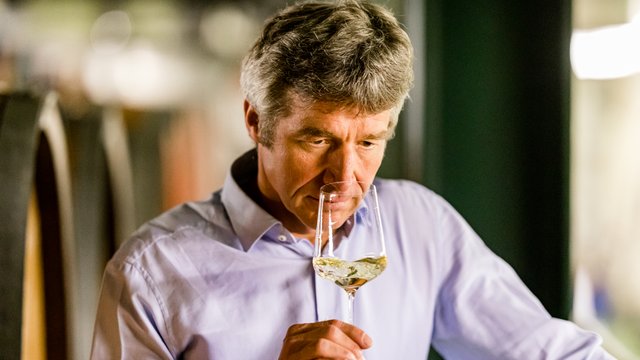Weiss Erd
Total area: 17.4 hectares
Weingut Künstler: 1.3 hectares
Vineyard
The Weiss Erd site is one of the very few anywhere in the Rheingau classified 100% as "ERSTES GEWÄCHS." While small and often overlooked in light of the region's more renowned sites, Weiß Erd benefits from an extraordinarily beneficial microclimate. Its wines are distinctly shaped by its white calcareous marl. Located 90m above sea level, the south-facing vineyard falls at only a moderate incline, perfect for capturing maximum sun. The earth is generally loose here, allowing the vine roots to reach deep into the white, calcareous soil.
Wine: Supple and Deep
During summertime, cool air flows down the slope, lowering temperatures and thus prolonging the ripening time of the grapes. The fertile loamy loess supplies the vines with ample water and an abundance of minerals. These conditions ensure that the grapes mature slowly over a long period of time, promoting full-bodied wines with intensive aromas of ripe fruits. Sand and gravel give the wine its racy acidity, while the chalky substrate lends enormous minerality. The acidity of this mineral-rich wine is well buffered and comes across as charming and gentle. Year after year the wines flavor into a typically soft and lithe elegance.
Soil
Weiß Erd features a subsoil comprised of calcareous and fine-grained marl from the Tertiary period. During the Ice Age, marl migrated down the slope and was mixed with various sediments, including sand, clay, limestone and gravel. Loess deposited later during the Ice Age and eventually weathered into brown, calcium-free loamy loess. Over millennia, agricultural use of the site caused erosion, allowing its namesake (limestone-rich) "white earth" to show through. To combat this loss of topsoil and to enhance the quality of the site, fresh soil was applied on several occasions and mixed with the underlying loamy loess. The most recent addition of topsoil also contains fresh calcareous loess, making it lighter in hue than the brown calcium-free loamy loess. In summertime, this site's soil almost glows bright white, distinguishing it significantly from the surrounding parcels.

